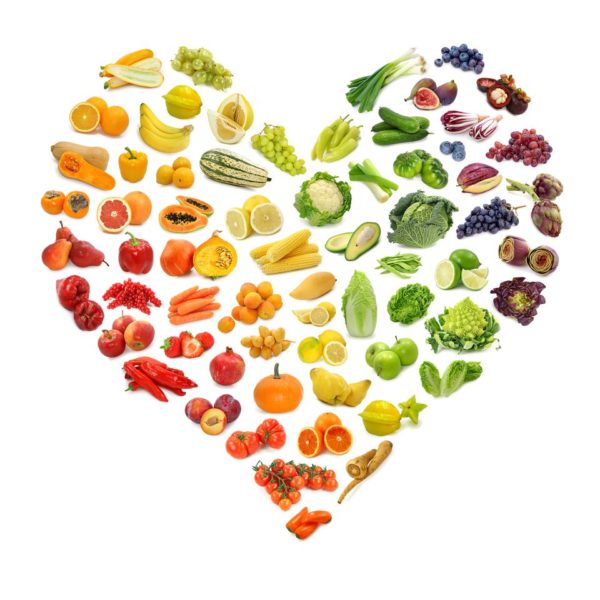Phytonutrients also known as phytochemicals occur naturally only in plants protecting them from ultraviolet radiation and pests. Phytonutrients work in our bodies synergistically with vitamins, minerals and fiber to promote good health and lower disease risk. Also they are antioxidants that protect and regenerate essential nutrients and may lower the risk of cancer. All natural foods have a unique color, flavor, and smell. Simply looking at their color can give you great insight as to what element of health various foods are likely to support. Most importantly, eating a wide array of colors every day is the best approach to getting all the antioxidants, vitamins, minerals and fiber your body needs.
Here are the most common food colors and their beneficial attributes:
Whites
Contain anthoxanthins, sulfur and quercetin. These substance boost your immune system fighting infection because they have anti-viral, anti-fungal and anti-inflammatory properties.
Example: Garlic, onions, cauliflower, etc.
Greens
These foods get their color from chlorophyll, a natural blood cleanser that supports the liver and kidneys in the elimination of toxins.
Aside from being high in vitamin A leafy greens are also rich in vitamin K and calcium which is necessary for blood clotting and building strong bones and teeth.
Example: Cruciferous vegetables, kale, broccoli, spinach, lettuces, green beans, parsley, pears, kiwis, etc.
Yellows
Sun colored food are rich in Vitamin C, potassium, folic acid and bromelaine which help reduce inflammation, prevent allergies, and maintain healthy skin, due to its’ ability to combat free radicals. Also they are rich in citrus bioflavanoids, which strengthen the collagen in your skin, tendons, ligaments and cartilage.
A favourite fruit of mine is pineapple which contains bromelaine, an enzyme that can help regulate digestion, reduce swelling and infection.
Example: Lemons, pineapples, yellow peppers, grapefruit, etc.
Oranges
High in beta-carotene, which our bodies transform this antioxidant into vitamin A. These nutrients aid in the prevention of cancer, heart disease and infections by supporting an important part of the immune system: our mucous membranes. Beta-carotene also helps to maintain healthy eyes and skin. It can also prevent macular degeneration and improve night vision.
Example: Orange bell peppers, sweet potatoes, peaches, mangoes, papaya, carrots, cantaloupe, summer squash, pumpkins, corn, oranges, etc.
Reds
Rich in the phytonutrients lycopene and anthocyanin, which greatly benefits the circulatory system by helping to build healthy cell walls. This improves blood pressure, organ function, and circulation. Red foods also offer sun protection from harmful UV damage.
Example: Tomatoes, watermelon, beets, red bell peppers, etc.
Purples/Blues
Pigments called anthocyanins give fruits and vegetables their color red, blue or purple. Anthocyanins are powerful antioxidants in the body. They contribute to overall health, disease prevention, and longevity. They raise good cholesterol while maintaining a healthy hearth and also promote a strong memory function. Studies have shown that anthocyanins decrease the risk of macular degeneration, certain types of cancer and stroke.
Example: Strawberries, blueberries, blackberries, eggplant, purple cabbage, etc.

